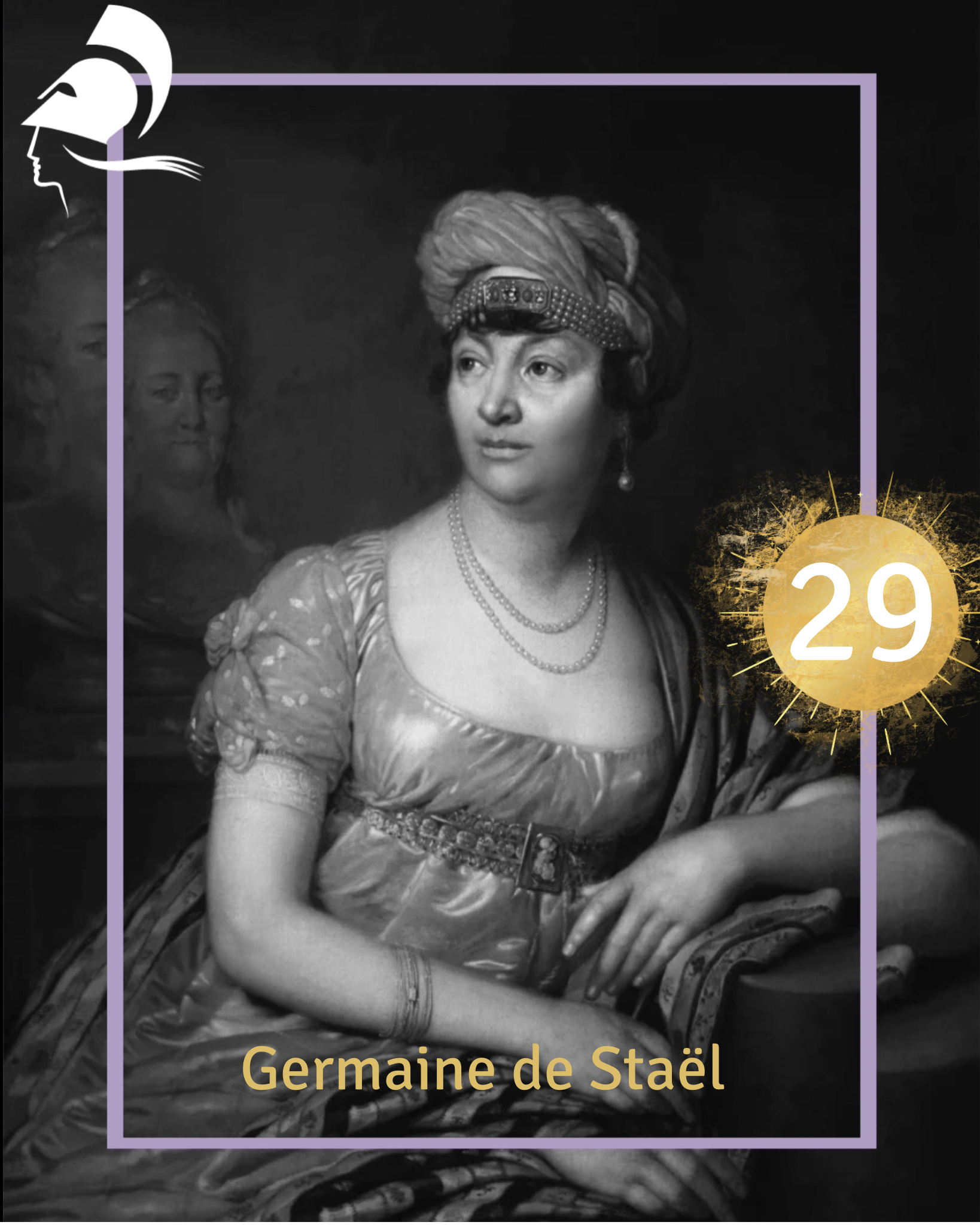 Germaine de Staël considered passions to be an impulsive force driving human beings independently of their volitions, thereby often posing an obstacle to the achievement of human happiness. While some virtuous individuals may be able to subordinate their passions to reason, such mastery is not possible in political society, where many individual members will inevitably be overcome by their strong emotions. Some of the most problematic “political” passions include vainglory, ambition and partisanship. Sentimental love can also distort individual judgment and divert the individual from performing his or her social duty. To temper the passions and subordinate them to reason, Germaine de Staël advises the practice of religion and charity. Philosophy is also central in this regard, since it draws the lover of wisdom into the activity of rational, logical reflection. While passion may prove problematic in the moral and political spheres, it has a certain value in the artistic sphere. The stormy expressions of emotion in the new “romantic” literature produced in Germany are witness to this value.
Germaine de Staël considered passions to be an impulsive force driving human beings independently of their volitions, thereby often posing an obstacle to the achievement of human happiness. While some virtuous individuals may be able to subordinate their passions to reason, such mastery is not possible in political society, where many individual members will inevitably be overcome by their strong emotions. Some of the most problematic “political” passions include vainglory, ambition and partisanship. Sentimental love can also distort individual judgment and divert the individual from performing his or her social duty. To temper the passions and subordinate them to reason, Germaine de Staël advises the practice of religion and charity. Philosophy is also central in this regard, since it draws the lover of wisdom into the activity of rational, logical reflection. While passion may prove problematic in the moral and political spheres, it has a certain value in the artistic sphere. The stormy expressions of emotion in the new “romantic” literature produced in Germany are witness to this value.
From the passions, that impulsive force, which domineers over the will of man, arises the principal obstacle to individual and political happiness. Without the interference of the passions, governments would be a machine fully as simple as the different levers whose power is proportioned to the weight they are to raise, and the destiny of man would exactly result from a just equilibrium between his desires and his means of gratifying them.” (de Staël, 1798)
We have three ECC articles on de Staël’s ideas:
If you are interested in de Staël research, find Scholars from our New Voices network.
You may also visit the entry of Germaine de Staël in our Directory of Women Philosophers.
References
de Staël, Germaine (1798), A Treatise on the Influence of the Passions, upon the Happiness of Individuals and of Nations, London: George Cawthorn.
You cannot copy content of this page









